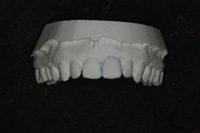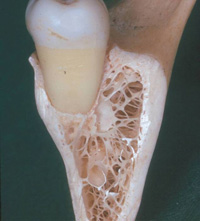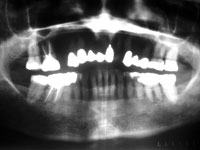Despite all the hottest high-tech wizardry for which you’ve purged and splurged in the name of collections, your return on investment may be distressingly low while your accounts receivable remain alarmingly high. Don’t be too quick, though, to blame your practice management software. The fact is, with the information technology available in most practices today, collection efforts should yield 98% for treatment currently being performed. The problem is, such a windfall requires not just the capabilities of technology but those of doctor and staff too.
FINANCIAL POLICY—LIKE MONEY IN THE BANK
For decades, dental practices allowed patients to “pay down” their balances over time; in essence, giving interest-free loans because that’s the way things were done in those days. Well, in these days, dentists realize that they have been serving as “no-interest banks” long enough. Going on record with a financial policy—stated guidelines as to how patients are expected to pay for their treatment—is essential to collection today. For example, the financial policy might spell out that if a patient’s insurance will cover 50% of the cost of a crown, the patient’s portion is to be paid for in full up front. But you’d better make certain that your financial coordinator goes over these “terms” with each patient for each procedure or treatment plan. Don’t assume that having your financial policy framed handsomely and hung on the wall or showcased in your brochure will do the job.
TRAINING: THE DIFFERENCE BETWEEN READY CASH AND A DEADLY CACHE OF PAST DUES
The number one reason for poor collections in most practices is a lack of training. To produce a hefty turnaround in your collection efforts, it is critical to provide results-oriented training designed to meet the following practice objectives…
(1) Over-the-Counter Collecting: To maximize payment at time of service, patients should be made aware (prior to their visit) of what is to be done and what fees they will be charged so they’ll be prepared to pay. Your financial coordinator/business administrator should look the patient straight in the eye, be firm and professional and follow a script such as, “Mrs. Reiss, this afternoon Dr. Ennis provided tooth-colored fillings on 2 teeth, which entailed 4 surfaces plus medication in each tooth and anesthetic, for a total of $345 for this visit. Our computer estimates that your remaining benefits from your insurer are approximately $278. Your portion for today’s visit, then, is $69. Would you prefer paying that with cash, check, or credit card?”
(2) Billing: “Cycle” billing, or billing on a daily rather than monthly basis, will reduce workload and increase cash flow. If you were to wait until the end of the month, the statement might already be 30 days past due. Every statement should include a due date (2 weeks from statement date), description of services, procedure codes, charges, payments, account balance, practice financial policy, and credit terms as well as a customized message addressing any overdue balance. Make sure that there is a space for the responsible party to write in a credit card number and expiration date as a means of payment. If you have a relationship with a patient financing company, you may want to piggyback its brochures with your statements. A self-addressed payment envelope should also be provided.
(3) Insurance: By tracking available benefits as well as uninsured procedures, you can calculate the anticipated insurance payment and collect the patient portion at time of dismissal. After your software performs a validation process on each claim—demonstrating a zero tolerance for claims on which data are not correctly entered—claims should be sent electronically on the day of service. Each week, a delinquent insurance claim report should be generated and grouped by carrier so that one call can be made per carrier to check on all claims that are 30 days delinquent.
(4) Delinquent Account Calls: Use accounts receivable and aged reports to identify patients who are past due as well as third-party payors that have not yet paid. Delinquent account calls should then begin one day past the due date on the first statement. Calls should be conducted professionally, observing guidelines of appropriate time and place to call. The manner and tone used will greatly influence the effectiveness of the call. Therefore, set the tone as one of working together to resolve the situation. The caller’s key question should be, “When can we expect payment?” Restate to the patient the amount he or she promises to pay and when. Highlights of this conversation should be entered into the computer, since it provides a critical history of collection attempts. On the same day, follow up the phone conversation with written confirmation.
CONCLUSION
Doctor, if you want to get more out of your practice, you must put more into it. Know the score at all times and provide superb training for your staff. It’s an unbeatable arrangement that will pay the utmost dividends.
Ms. McKenzie, a certified management consultant, is a nationally known lecturer, author, and consultant to the ADA’s Council on Dental Practice. She is president of McKenzie Management, which is endorsed by the California Dental Association, that provides in-office analysis of the business, clinical, and hygiene department; conducts on-site staff training; and offers a full line of educational management books, audiotapes, and videos. Ms. McKenzie is founder of the La Jolla, Calif-based Center for Dental Career Development, which provides advanced business education to the dental profession and team-building retreats. For more information, contact Ms. McKenzie at (877) 777-6151, sallymck@mckenziemgmt.com, or visit dentalcareerdevelop.com.











